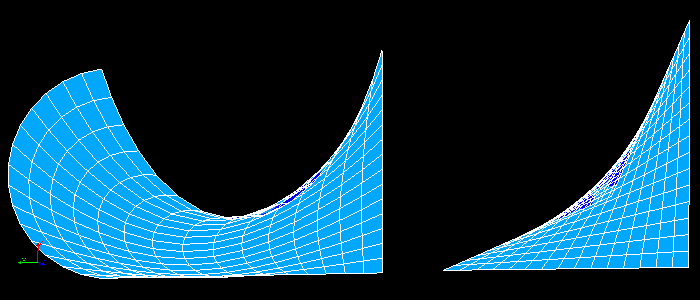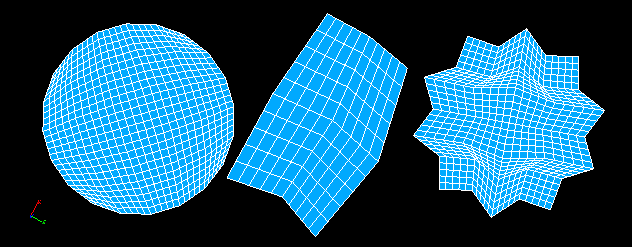Version: 8.3.0
Quadrangle: Mapping meshing algorithm is intended for creating all-quadrangle and quad-dominant meshes on faces without holes and bound by at least three edges.
The algorithm can create mesh on any face but its quality and validity depend on two factors:

The algorithm uses Transfinite Interpolation technique in the parametric space of a face to locate nodes inside the face.
The algorithm treats any face as quadrangle. If a face is bound by more than four edges, four most sharp vertices are considered as corners of the quadrangle and all edges between these vertices are treated as quadrangle sides. In the case of three edges, the vertex specified by the user is considered as a fourth degenerated side of the quadrangle.

To get an all-quadrangle mesh you have to carefully define 1D hypotheses on edges of a face. To get a structured mesh you have to provide equal number of segments on opposite sides of the quadrangle. If this condition is not respected, the algorithm by default (without a hypothesis) creates a quad-dominant mesh with triangles located near the side with the maximal number of segments. However, you can get an all-quadrangle mesh in this case by using Quadrangle Parameters hypothesis to specify how to make transition mesh between opposite sides with different number of segments, provided that certain conditions are respected. In any case the total number of segments must be even. To use Reduced transition method, there must be an equal number of segments on one pair of opposite sides.
The following hypotheses help to create quadrangle meshes.